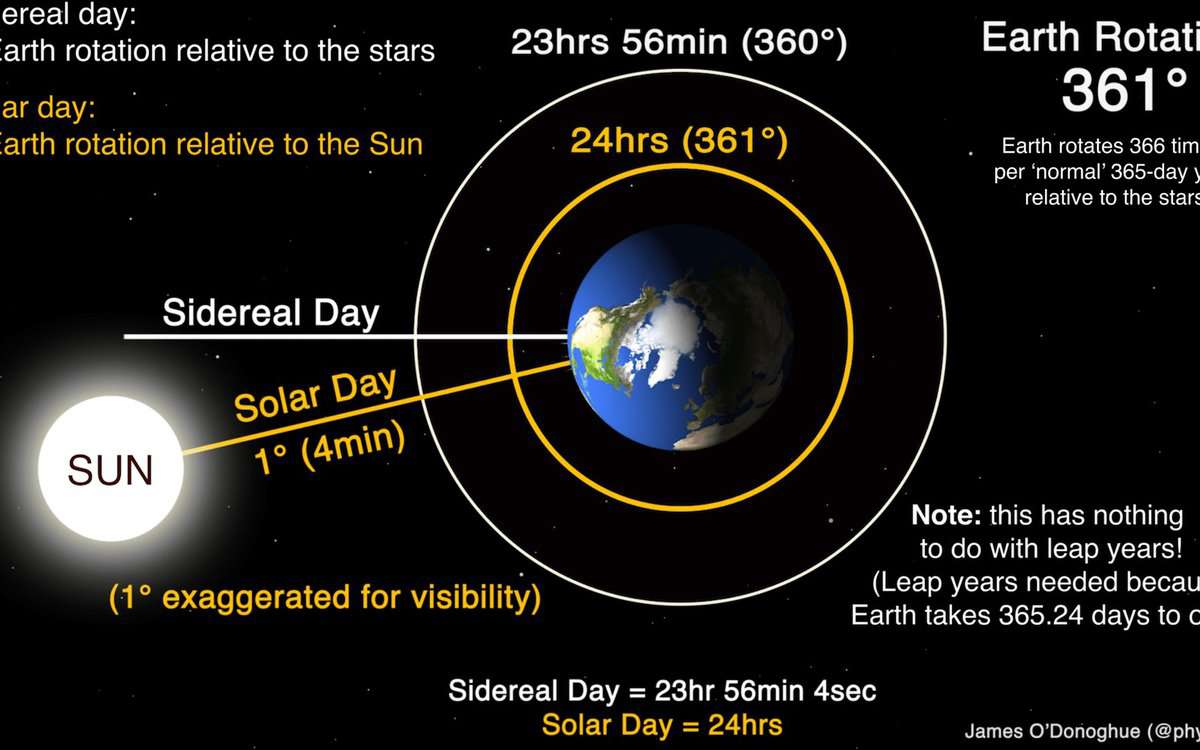This website is designed for both professional meteorologists and individuals who require weather forecasts for professional or personal purposes.
On this website, you will discover a plethora of valuable weather-related information, including aerological charts, professional maps, and forecasts, as well as real-time weather and airport forecasts.
By utilizing our website, you will enhance your efficiency in developing weather forecasts and elevate their quality.
Here, you can exclusively access the information that the site’s authors rely on for their day-to-day operational tasks.
Processed aerologic diagrams have been utilized to create unique content. These diagrams illustrate various atmospheric phenomena such as the tropopause, jet currents, inversion and isotherm layers, condensation and convection levels, and icing and chattering zones, along with their corresponding altitudes. Additionally, probable zones where layered clouds may be present are identified. The mean wind speed has been calculated using standard layers up to 16 km and extrapolated up to 30 km. Thunderstorm coefficients, including those of Vaiting, Faust, Fateev, and Simil, have been determined using the Lebedeva method.
Furthermore, instability indices such as the K index, Vertical Totals index, Crosst Totals index, and Total Totals index have been calculated.
The source code of KN-04 has been obtained for each station, and a decoded table with real values has been derived.
The amount of data obtained from these aerologic diagrams is continuously growing.
Aerologic charts are accessible in both rectangular coordinate system (ADP form) and oblique coordinate system (ADC form) for the dates 00 UTC and 12 UTC, covering data from all over the globe.
Radar surveillance findings.
Findings from radar surveillance conducted in Ukraine, Russia, and Belarus.
Weather charts.
Synoptic charts, maps displaying barometric topography.
Satellite.
Visual and infrared satellite provided by the top weather centers worldwide.
Get the weather forecast for international airports in a convenient tabular format. View up to 24 airports on a single page without having to switch browser windows. Access fully decoded METAR and TAF codes in a separate table.
Weather Predictions.
View weather prediction maps based on various models. You can always discover the model that is most applicable to your area.
Assorted.
A wide range of supplementary details, articles on weather, a dictionary of weather terms, data on solar radiation, and many other resources.
Chat. Just chat. Here you can ask various questions, perhaps even obtain answers to them. Or simply peruse the thoughts of others.
Stellar days refer to the duration of a celestial body’s rotation around its own axis in an inertial frame of reference, typically the frame associated with distant stars. In the case of Earth, it represents the time taken for the planet to complete one full revolution around its axis relative to the distant stars.
For the year 2000, a sidereal day on Earth amounts to 23 hours 56 minutes 4.090530833 seconds, which equals 86164.090530833 seconds.
A sidereal day is further divided into sidereal hours, minutes, and seconds. It is 3 minutes and 56 seconds shorter than the average solar day, with each sidereal hour being 9.86 seconds shorter than the commonly accepted hour. These units of time are primarily used in rare instances when organizing astronomical observations.
There are various divisions of sidereal days:
- Astronomers use a unit of time called a sidereal hour, which is equal to 1/24 of a sidereal day. During a sidereal hour, the Earth rotates 15° in relation to distant stars, which are considered an inertial reference frame. As of the year 2000, a sidereal hour is equivalent to 0 h 59 min 50.1704387847 sec .
- The sidereal minute, another unit of time used in astronomy, is equal to 1/60 of a sidereal hour. During a sidereal minute, the Earth rotates 15′ relative to distant stars, which serve as the inertial reference frame. As of the year 2000, a sidereal minute is equivalent to 0 h 0 min 59.836173979797451 sec .
- A sidereal second is a time measurement used by astronomers and is equivalent to 1/60 of a sidereal minute. During a sidereal second, the Earth rotates 15″ in relation to faraway stars, which are considered the inertial reference frame. In the year 2000, a sidereal second is equal to 0 h 0 min 0.9972695663290856 sec.
When calculating the angular velocity of the Earth’s rotation, it is important to take into account the fact that the Earth makes a complete revolution relative to the distant stars, not the sun. This is because the Earth can be considered an inertial reference frame in this context.
Knowing the correct angular velocity is crucial when calculating the forces of inertia, such as centrifugal and Coriolis forces. These forces play a significant role in various fields such as hydrology, meteorology, ballistics, and astronautics.
If we use the rotation period of the Earth as 86400 seconds, we would introduce an error of 0.3%. This may not seem significant, but it can have a decisive impact on artillery firing accuracy and spacecraft trajectory calculations.
- Stellar days refer to the rotation period of a celestial body around its own axis in an inertial reference frame, typically the reference frame associated with distant stars. In the case of Earth, it is the time taken for the Earth to complete one revolution on its axis relative to distant stars.
For the year 2000, a sidereal day on Earth amounts to 23h56min4.090530833sec, which is equivalent to 86164.090530833sec.
A sidereal day is further divided into sidereal hours, minutes, and seconds. It is 3 minutes and 56 seconds shorter than the average solar day, with the sidereal hour being 9.86 seconds shorter than the commonly accepted hour. These units of time are primarily used for organizing astronomical observations.
There are also smaller intervals of sidereal days that can be distinguished:
A sidereal hour is a measurement of time that is utilized in the field of astronomy. It is defined as 1/24 of a sidereal day. Throughout the course of a sidereal hour, the Earth completes a rotation of 15° in relation to faraway stars, which are considered to be an inertial reference frame. For the year 2000, the duration of a sidereal hour is recorded as 0h59min50.1704387847sec.
The sidereal minute, another unit of time used in astronomy, is equivalent to 1/60 of a sidereal hour. During a sidereal minute, the Earth rotates 15′ in relation to distant stars, which again serve as an inertial reference frame. For the year 2000, the duration of a sidereal minute is 0h0min59.836173979797451sec.
Related concepts
Solar days – the duration of time during which a celestial object completes one full rotation on its axis with respect to the center of the Sun. It can also be defined as the time interval between two occurrences of the celestial object’s center passing through the meridian (upper or lower) at a specific point on Earth (or any other celestial body).
Rotation axis tilt refers to the angle by which a celestial body’s rotation axis deviates from being perpendicular to the plane of its orbit. In simpler terms, it is the angle between the equatorial plane of the celestial body and its orbital plane.
Orbital velocity is the speed at which a celestial body (typically a planet, natural or artificial satellite, or multiple star) revolves around the barycenter of the system, usually a more massive body.
Mentions in the literature
Therefore, a sidereal day is shorter than a solar day by approximately 3 minutes and 56 seconds, which is roughly equivalent to 4 meters. The difference in duration is not constant due to two main factors. Firstly, the Earth follows an elliptical orbit around the Sun, resulting in varying speeds at different points of its orbit. When the Earth is closer to the Sun, it moves faster, while it moves slower when it is farther away. Secondly, the Earth’s axis of rotation is inclined to the plane of its orbit. Consequently, the true solar time and the average solar time differ by varying amounts on different days, with some days having a difference of up to 16 minutes. Only four times a year do these two times coincide:
Thus, the sidereal day is typically shorter than the solar day by approximately 3.56 seconds and 4 meters. However, this difference is not constant due to two main factors. Firstly, the Earth’s movement around the Sun is not uniform, as it follows an elliptical orbit. This means that at certain points closer to the Sun, the Earth moves faster, while at more distant points, it slows down. Secondly, the Earth’s axis of rotation is inclined to the plane of its orbit. These factors contribute to the divergence between the true and average solar time on different days, with some days experiencing a difference of up to 16 minutes. It is only four times a year when these two times coincide.
3) The sidereal day is the time it takes for the vernal equinox to return to the same point. It is 3 minutes and 56.555 seconds shorter than the solar day. The local sidereal day is the interval of time between the culmination of the Aries point on the local meridian and a given point in time.
Before moving forward, we need to perform the same calculations as we did for the planets using the values in the sidereal time column. The seconds will be rounded off as before. Throughout the day, the sidereal time changes by approximately 4 minutes. From the beginning of the day to the time of birth, it changes by about 3 minutes. Therefore, the sidereal time we are interested in is 14 hours and 13 minutes. We will use this value to determine the local sidereal time in our next experiment.
Continuation of Related Concepts
The movements of the Sun and planets on the celestial sphere only reflect their visible, or apparent, movements as observed from Earth. In this case, the movements of the celestial bodies on the celestial sphere are not directly connected to the Earth’s daily rotation. Instead, they are a result of the rotation of the celestial sphere itself.
Orbital elements, also known as elements of the orbit of a celestial body, are a set of parameters that describe the size and shape of the body’s orbit, as well as its position in space and within the orbit itself.
An orbital node is one of the two points on the celestial sphere where the orbit of a celestial body intersects with a reference plane. In the case of the planets of the solar system and the Moon, this reference plane is the ecliptic plane. The celestial equator and its corresponding coordinate system are typically used to track ISVs. Due to the presence of two orbital nodes, a distinction is made between them.
The system of coordinates known as ecliptic coordinates is based on the plane of the ecliptic as the principal plane and the pole of the ecliptic as the pole. These coordinates are used to observe the movement of celestial bodies within the solar system, many of which have orbital planes that are close to the ecliptic plane. Additionally, they are used to track the apparent motion of the Sun across the sky throughout the year.
The Earth’s orbit is the path that the Earth follows as it orbits the Sun. This orbit has an average distance of approximately 149.6 million kilometers (152.1 million km at its farthest point, known as aphelion, and 147.09 million km at its closest point, known as perihelion).
Culmination (astronomy) refers to the moment when the center of a celestial body passes through the celestial meridian during its daily motion. In simpler terms, it is the point where the center of a celestial body intersects with the daily parallel and the celestial meridian.
Tidal acceleration is a phenomenon caused by the gravitational-tidal interaction between a natural satellite and its central body. This interaction leads to several effects, including changes in the satellite’s orbit and the rotation of the central body around its axis. The Earth-Moon system provides a clear example of these effects. Additionally, tidal acceleration can also result in the heating of a planet’s interior, as observed in cases such as Io and Europa, and potentially had a significant impact on the ancient Earth.
The equation of time represents the discrepancy between mean solar time (SSV) and true solar time (TSV), expressed as UV = SSV – TSV. This distinction remains constant for any observer located anywhere on Earth. To determine the equation of time, one can refer to specialized astronomical publications, utilize astronomical software, or employ the following mathematical formula.
Planetary motion, specifically the repetitive or retrograde movement, refers to the observed motion of planets against the backdrop of stars on the celestial sphere, moving from east to west, which is the opposite direction of the Sun’s (annual) and Moon’s motion.
The celestial coordinate system is employed in astronomy for the purpose of describing the location of celestial bodies in the sky or specific points on an imaginary celestial sphere. The position of these bodies or points is determined by two angular measurements, known as arcs, which serve to uniquely define their position within the celestial sphere. Therefore, the celestial coordinate system can be considered a spherical coordinate system in which the third coordinate, distance, is often unspecified and does not impact the system.
The conjunction is a configuration of celestial bodies where their ecliptic longitudes are equal. Occasionally, the notion of conjunction by direct ascent rather than by ecliptic longitude is also utilized. Thus, during the conjunction of two bodies, they are relatively close to each other on the celestial sphere (although the moment of conjunction does not necessarily align with the moment of maximum proximity). The term conjunction can also be employed in astrology.
Astronomical refraction (also known as atmospheric refraction) refers to the refraction in the atmosphere of light rays from celestial luminaries, resulting in a change in their position in the sky.
The Celestial Pole is a specific point on the celestial sphere where the apparent daily movement of stars is caused by the Earth’s rotation on its axis. The direction towards the North Celestial Pole aligns with the direction to the geographical north, while the South Celestial Pole aligns with the geographical south. The North Celestial Pole is located in the constellation Ursa Minor, with the star Polaris serving as its reference point. On the other hand, the South Celestial Pole is situated in the constellation Octans. Over time, due to the Earth’s axis precession, the celestial poles gradually shift approximately 20 arcseconds per year.
A circular orbit is an orbit in which all points are equidistant from the center point and is formed by an object revolving around a fixed axis. It can be thought of as a unique case of an elliptical orbit with zero eccentricity. In our Solar System, both Venus (with an eccentricity of 0.0068) and Earth (with an eccentricity of 0.0167) possess orbits that are nearly circular.
An elliptical orbit, in the field of astrodynamics and celestial mechanics, refers to a Keplerian orbit with an eccentricity value below 1. A circular orbit can be seen as a special instance of an elliptical orbit with zero eccentricity. According to a more precise definition, an elliptical orbit does not include circular orbits, making the eccentricity value strictly greater than zero but less than one. In a broader sense, an elliptical orbit is a Keplerian orbit with negative energy, encompassing radial orbits as well.
Synchronous rotation, also known as tidal capture, refers to the phenomenon in which a satellite’s rotation period around its axis matches its revolution period around the central body. As a result, the satellite consistently presents the same side to the central body due to completing one full rotation around its axis in the same duration it takes to orbit around the central body. Tidal capture commonly occurs during mutual motion and is a notable characteristic observed in numerous natural satellites of the planets within our solar system.
Lissajous orbit is an orbital trajectory that is almost periodic, allowing a body to move around a Lagrangian point within the three-body problem without the need for engines. Lyapunov orbits, on the other hand, are curves that lie in the same plane as the two main bodies in the three-body system. In contrast, Lissajous orbits consist of regions both in this plane and perpendicular to it, following the path of Lissajous curves. Halo orbits also have components in the perpendicular plane, but they differ from Lissajous orbits, as they…
The synodic orbital period, also known as the period of conjunction, refers to the duration between two consecutive conjunctions of the Moon or a planet in the solar system with the Sun as seen from Earth. It is important to note that these conjunctions must occur in a specific linear order, particularly for the inner planets. For instance, the consecutive upper conjunctions occur when a planet passes behind the Sun.
The terminator, derived from the Latin word “terminare” meaning to stop, is a line that separates the illuminated part of a celestial body, such as a planet, from the unilluminated portion. When observing a spherical body, the terminator appears as a semi-ellipse and takes the form of a straight line at the end of the first and beginning of the last quarters.
The International Celestial Reference System (ICRS), also known as the International Astronomical Reference System, has been the standard celestial coordinate system since 1998. It was officially adopted at the 23rd ICA congress in 1997. The reference point for this system is the barycenter of the Solar System. The coordinates in the ICRS are designed to be as similar as possible to the equatorial coordinates of the J2000.0 epoch, with only a slight difference in arc seconds.
The ecliptic, derived from the Latin term (linea) ecliptica and the Greek word ἔκλειψις, refers to a vast celestial circle that traces the visible annual path of the Sun. Additionally, the ecliptic plane represents the plane of the Earth’s revolution around the Sun, also known as the Earth’s orbit. A more precise modern definition of the ecliptic is the intersection of the celestial sphere with the orbit plane of the barycenter of the Earth-Moon system.
A supermoon is an astronomical event that occurs when a full or new moon coincides with perigee, the point of closest approach between the Moon and the Earth. This phenomenon is a result of the Moon’s elliptical orbit around our planet. Consequently, observers on Earth are able to witness a larger size of the lunar disk than usual.
A hyperbolic trajectory refers to the path that an object takes around a central body when it has enough velocity to overcome the gravitational pull of the central body. In nonrelativistic cases, the shape of this trajectory is a hyperbola, and the eccentricity of the orbit is greater than one.
The Hill sphere is a region located between the Lagrangian points L1 and L2, which are points on the line connecting the centers of two bodies. It is in this direction that the gravitational influence of the smaller body is the smallest, thus limiting the size of the Hill sphere. If a third body orbits the smaller body beyond this distance, its orbit will partially lie outside the Hill sphere and will be increasingly affected by the tidal forces of the central body. Eventually, the smaller body’s gravitational pull will dominate and dictate the trajectory of the third body.
Extraterrestrial skies – A perspective of the cosmos from the terrain of a celestial body other than our own planet. This viewpoint can vary from what is observed from Earth’s surface – for numerous reasons. The crucial determinant is the atmospheric conditions of the celestial body, or lack thereof. The hue of the sky is contingent on the density and chemical makeup of the atmosphere. Cloud formations may or may not be present and can exhibit diverse shades. Additional elements may encompass celestial entities visible from the surface, such as distant stars, orbiting satellites, neighboring planets, and celestial rings.
Retrograde motion is the movement in a direction that is opposite to the direction of the forward movement. This phrase can be used to describe the rotation of one celestial body around another in orbit, or the rotation of a celestial body around its own axis, as well as other orbital parameters such as precession and nutation. In the context of planetary systems, retrograde motion typically refers to the movement that is contrary to the rotation of the central body, which is the object at the center of the system.
The binary mass function is a function that imposes restrictions on the mass of the undetected component (either a star or an exoplanet) in spectrally binary stars or single-lined planetary systems. This value is derived from the observed properties, namely the orbital period of the binary system and the peak radial velocity of the observed star. The velocity of one component of the binary system, along with the orbital period, offers partial insight into the distance and gravitational interaction.
The coordinate system that is used to observe stars and the movement of celestial bodies of the solar system on the ground with the naked eye, binoculars or telescope is called the horizontal coordinate system. In this system, the principal plane is the plane of the mathematical horizon, and the poles are zenith and nadir. The azimuthal setting of the telescope is set to 85. Throughout the day, the horizontal coordinates of the planets, the Sun, and the stars change continuously due to diurnal rotation.
Declination (δ) is a fundamental component of the equatorial coordinate system in astronomy. It measures the angular distance between the celestial equator and a celestial object on the celestial sphere, typically expressed in degrees, minutes, and seconds of arc. The declination is positive when north of the celestial equator and negative when south of it.
The galactic coordinate system, on the other hand, has its origin in the Sun and a reference direction from the center of the Milky Way galaxy. The galactic coordinate system shares its plane with the galactic disk. Similar to geographic coordinates, galactic coordinates consist of latitude and longitude.
A parade of planets is a fascinating astronomical event where several planets in our solar system align on the same side of the Sun within a small sector of the celestial sphere, appearing relatively close to each other.
The third space velocity refers to the minimum velocity required for an object near the Earth’s surface to overcome the gravitational pull of both the Earth and the Sun, enabling it to escape the solar system.
A geographic pole signifies the point where the Earth’s axis of rotation intersects with its surface. There are two geographic poles: the North Pole situated in the Arctic region (specifically in the central part of the Arctic Ocean) and the South Pole located in Antarctica.
“The second option is theoretically different, but in reality, it is essentially the same thing.”
“How did you arrive at these figures?”
“I calculated them based on the fact that the tropical year is 20 minutes shorter than the sidereal year.”
“From what I gather, astronomers tend to use the second definition. However, it’s worth noting that Wikipedia is a user-edited platform and can contain inaccuracies.”
“Essentially, it comes down to the second option. However, in practice, it yields the same result and there is no three-second difference.”
“The first option is 23h 56min 4.090530833sec.
The second option is 23h 56min 4.0989036sec.”
1. What is the distinction between a true solar day and an average solar day?
A true solar day represents the duration between two consecutive culminations of the center of the Sun.
An average solar day represents the duration between two consecutive average noon days.
Using true solar days to measure time is inconvenient due to their irregularity. As a result, average solar days are employed. True solar days are determined by considering the movement of the center of the solar disk, while mean solar days are determined by considering the movement of the mean equatorial Sun.
2. How is a sidereal day defined?
A sidereal day is defined as the duration between two consecutive occurrences of the vernal equinox point reaching its highest point.
3. What does the equation of time refer to?
The equation of time refers to the discrepancy between mean solar time and actual solar time at a given moment.
4. What does universal time refer to?
Universal time refers to the average solar time at the Greenwich meridian.
5. What is the definition of the date line? Where does it cross?
The date line is the dividing line that marks the start of a new date and day of the week.
The International Date Line passes through the Bering Strait, extending from the North Pole to the South Pole (180° meridian).
6. What are the different calendar systems and what are their underlying principles?
Every calendar system is based on three fundamental units for measuring time: the average solar day, the synodic (or lunar) month, and the tropical (or solar) year.
There are three types of calendar systems: lunar calendars, luni-solar calendars, and solar calendars.
In a lunar calendar, the year is divided into 12 months, with alternating 30 or 29 days. In total, the lunar calendar consists of 354 or 355 average solar days, making it shorter than the solar year by approximately 10 days.
In luni-solar calendars, the total number of lunar months approximates the length of a tropical year.
The solar calendar consists of 12 months, with 30 days in each month. Additionally, 5 extra feast days are added at the end of the year.
The Gregorian calendar employs a distinct set of guidelines to determine leap years. While the Julian calendar designates every fourth year as a leap year, the Gregorian calendar incorporates a revised rule. Under this rule, if a year concludes with two zeros, it is considered a leap year only if the number of hundreds in the year is divisible by four. In all other instances, the year is not classified as a leap year.
8. Why is it not possible to create a completely accurate calendar?
The reason is that the astronomical cycles, which the calendar is based on, do not align perfectly with each other. A year does not consist of a whole number of days and equal months.
9. Determine the discrepancy in mean solar time between the cities of Grodno and Mogilev.
The coordinates of the cities are as follows:
Grodno: $23^h49^m32^c$E;
Mogilev: $30^h20^m41^s$ E.
The average solar time can be calculated using the formula:
where $λ$ represents the longitude of the observation location, and $T_0$ is the world time.
To find the difference in mean solar time (local time) between the two cities, we can perform the calculation: $ΔT_ = T_ – T_.$
10. The ship’s captain observed a time of 14 h 13 min 46 s on a chronometer set to Greenwich time at local noon. Calculate the ship’s longitude.
Local time refers to mean solar time, while local Greenwich time is the standard world time. By using the formula that connects mean solar time Tm, world time T0, and longitude λ (in hours), we can find the solution:
11. The observer’s geographic coordinates can be determined based on the information provided. On June 22, at 8:40 a.m. universal time, the observer determined that mean local noon occurred. At this moment, the Sun’s altitude was measured to be 62°10′ and the Sun’s declination was δ = +23°26′.
To determine the geographic coordinates of the observer, we can use the formula for finding the upper culmination and refer to the figure.
By rearranging the formula and solving for the latitude of the observer’s point, we can express it as:
Local time refers to mean solar time, while Greenwich local time corresponds to universal time. We can use the relationship between mean solar time (T_m), world time (T_0), and longitude (λ) expressed in hour measure:
1. What are the distinctions between a true solar day and an average solar day?
A true solar day refers to the duration between two consecutive culminations of the center of the Sun.
An average solar day, on the other hand, represents the time interval between two consecutive average noons.
The use of true solar days for time measurement is inconvenient due to their irregularity. As a result, the average solar day is employed for this purpose. The calculation of true solar days takes into account the movement of the center of the solar disk, while the calculation of average solar days considers the motion of the mean equatorial Sun.
2. What is a sidereal day?
A sidereal day is defined as the time it takes for two successive occurrences of the vernal equinox to reach their highest point in the sky.
3. What is the equation of time?
The equation of time represents the discrepancy between mean solar time and actual solar time at any given moment.
The local mean solar time of the Greenwich meridian is known as Universal time.
5. What is the definition of the date line? Where is it located?
The date line marks the boundary where a new date and day of the week begin.
The International Date Line passes through the Bering Strait, spanning from the North Pole to the South Pole along the 180° meridian.
6. What are the names of the calendar systems and what are their principles?
The calendar systems are based on three fundamental units of time measurement: the average solar day, the synodic (or lunar) month, and the tropical (or solar) year.
There are three types of calendar systems: lunar calendars, luni-solar calendars, and solar calendars.
In a lunar calendar, the year is divided into 12 months, with each month alternating between 30 or 29 days. In total, the lunar calendar consists of 354 or 355 average solar days, making it shorter than the solar year by approximately 10 days.
In luni-solar calendars, the total number of lunar months roughly matches the duration of a tropical year.
In a solar calendar, the year is composed of 12 months, each with 30 days, and an additional 5 feast days at the end of the year.
7. What sets the Gregorian calendar apart from the Julian calendar?
The Gregorian calendar distinguishes itself from the Julian calendar through its approach to leap years. While the Julian calendar designates every fourth year as a leap year, the Gregorian calendar introduced a new rule. Under this rule, if a year ends with two zeros, it is considered a leap year only if the number of hundreds in it is divisible by four. In all other cases, the year is not considered a leap year.
8. Why is it not possible to create a completely accurate calendar?
It is not possible to create an absolutely accurate calendar because the astronomical cycles that the calendar is based on do not perfectly align with each other. A year does not consist of a whole number of days and equal months.
9. Determine the discrepancy in mean solar time between the cities of Grodno and Mogilev.
The coordinates of the cities are as follows:
Grodno: $23^h49^m32^c$E;
Mogilev: $30^h20^m41^s$ E.
The average solar time can be calculated using the following formula:
where $λ$ represents the longitude of the observation location and $T_0$ represents the universal time.
To calculate the difference in mean solar time (local time) between the two cities, use the equation: $ΔT_ = T_ – T_.$
Mean solar time is equivalent to local time, while Greenwich local time is considered universal time. By utilizing the relationship between mean solar time T_m, world time T_0, and longitude λ, expressed in hours, we can derive the following equation:
11. On June 22, an observer recorded that mean local noon occurred at 8:40 a.m. universal time, with the Sun’s altitude at that moment measuring 62°10′. The Sun’s declination on this particular day was δ = +23°26′. It is required to determine the geographical coordinates of the observer.
By utilizing the formula for determining the upper culmination and referring to the provided figure, we can obtain the following information:
By substituting the formula, we can calculate the latitude of the observer’s location:
Local time corresponds to mean solar time, while Greenwich local time represents universal time. By using the formula that connects mean solar time (T m ), universal time (T 0 ), and longitude (λ) measured in hours, we can derive the following:
A sidereal day is the time interval between two consecutive culminations of the same celestial body at the vernal equinox on a specific meridian.
A solar day is the time it takes for a celestial body to complete one rotation on its axis in relation to the Sun. Another way to define it is the time interval between two similar culminations (either upper or lower) of the Sun’s center as it passes through the meridian of a given location on Earth (or any other celestial body). The following discussion pertains to Earth, unless stated otherwise.
As the Earth spins on its axis, the celestial sky, and along with it the position of the vernal equinox, also rotates. Therefore, it has been decided to measure stellar days as the time from one passage through the meridian of this significant point to another. The difference between stellar days and average solar days is 3 minutes and 55.91 seconds in favor of the Sun. This difference accumulates due to the Earth’s rotation on its axis and around the Sun in the same direction, causing the stars to appear slightly earlier each night. Over the course of a year, exactly one day is accumulated: a solar year consists of 365.24 days, while a sidereal year consists of 366.24 days.
The interval of time between two sunrises is known as a solar day,
whereas the interval between two consecutive upper (or lower) culminations of the vernal equinox is referred to as a sidereal day.
An earth day is equal to 24 hours.
That’s all.
😉
A stellar day is a period of time that corresponds to the rotation of a celestial body, such as the Earth, around its axis in relation to the stars.
An Earth’s day, on the other hand, refers to the time interval between two consecutive upper or lower culminations of the Sun. It is equivalent to a solar day.
This website caters to both professional meteorologists and individuals who require weather forecasts for either professional or personal purposes.
Here, you will discover a wealth of valuable information about weather, including aerological charts, professional maps, and forecasts, as well as real-time weather updates and airport forecasts.
By utilizing our website, you will be able to optimize your time when creating weather forecasts and improve their overall quality.
Rest assured that the information provided on this site is the same data utilized by the site’s authors in their day-to-day operational work.
Processed aerologic diagrams have been utilized to create various visual representations. These diagrams show important atmospheric phenomena such as the tropopause, jet currents, inversion and isotherm layers, as well as condensation and convection levels. Additionally, they highlight icing and chattering zones along with their corresponding altitudes. The diagrams also indicate the probable areas where layered clouds are present. Mean winds have been calculated for standard layers up to 16 km and have been extrapolated up to 30 km. Thunderstorm coefficients, including those developed by Vaiting, Faust, Fateev, and Simil, have been determined using the Lebedeva method.
Instability indices, including the K index, Vertical Totals index, Crosst Totals index, and Total Totals index, have been defined to assess atmospheric instability.
The source code of KN-04 for each station has been obtained, and a decoded table with real values has been generated.
The amount of calculated data obtained from aerologic diagrams continues to grow steadily.
Aerologic charts are accessible in both rectangular coordinate system (ADP form) and oblique coordinate system (ADC form) for data from the entire globe, with a time update at 00 UTC and 12 UTC.
Radar surveillance.
Findings from radar surveillance conducted in Ukraine, Russia, and Belarus.
Weather charts.
Synoptic charts, charts depicting barometric topography.
Satellite.
Visual and infrared satellite imagery provided by the world’s top weather centers.
Airport Weather.
Get the weather information of international airports in a convenient tabular format. All the information you need is displayed on one page, so you don’t have to switch browser windows anymore.
In addition, you can find a separate table with the fully decoded METAR and TAF codes for each airport.
Weather predictions.
Maps displaying weather predictions from various models. You will consistently have the option to select the model that most accurately corresponds to your area.
Diverse.
Assorted supplementary details, articles about weather, a dictionary of weather terms, data on solar radiation, and many other resources.
Do you want to have a conversation? An opportunity to ask various questions and possibly find answers? Or simply observe and read what others are discussing? This chat is the perfect place for all these purposes.
A true solar day refers to the time interval between two consecutive climaxes of the Sun (specifically, the center of the solar disk) on the same geographical meridian. The starting point of a true solar day is determined by the moment of the Sun’s lower culmination (true midnight) at a given meridian. The time elapsed from the lower culmination to any other position of the Sun is known as true solar time (TS), which is expressed in fractions of true solar days (or true solar hours, minutes, and seconds). True solar time at any given meridian at a particular moment is equal to the hour angle of the Sun (tS) plus 12 hours, represented as TS = tS + 12h (1.18). The hour angle of the Sun can always be directly measured when it is above the horizon and not obstructed by clouds. At true noon (the Sun’s upper culmination), tS is equal to 0h, making true solar time at noon consistently 12 hours. Although measuring time using true solar days is straightforward, using true solar time in everyday life is as inconvenient as using sidereal time. This inconvenience arises from the variable duration of the true solar day. The delay between the upper (and lower) culmination of the Sun and sidereal time differs on different days of the year. Consequently, the duration of the true solar day also varies. If the daily increment of the Sun’s longitude were constant, the duration of the true solar day would be consistent. However, this is not the case due to two reasons: 1) The Sun’s movement occurs along the ecliptic, which is inclined to the celestial equator by an angle of 23°27′. 2) The Sun’s motion along the ecliptic is not uniform. Even if the Sun were to move uniformly along the ecliptic, the duration of true solar days would still differ because near the equinoxes, the increments of the Sun’s direct ascent (ab, bc) are smaller than the corresponding segments of the ecliptic (AB = BC = Dl) projected onto the celestial equator (QQ’). As a result of these factors, the true solar day on December 22, for example, is longer than on September 23. The variable duration of the true solar day makes it impractical for everyday timekeeping.
- Home /
- Education /
- Astronomy /
- True solar day. True solar time
What is a twenty-four hour day?
The Earth completes one rotation around its axis in 23 hours, 56 minutes, and 4 seconds. However, this period is known as a sidereal day because it is measured relative to distant fixed stars. A solar day, on the other hand, is a 24-hour period. The difference is that while the Earth rotates around its axis, it also orbits the Sun. This means that relative to the Sun, our planet completes one revolution every 24 hours.
What Causes the Changing of Seasons on Earth?
The Earth completes a full orbit around the Sun in 365 days and 6 hours, resulting in a total of 365 days in a regular year (and 366 in a leap year). These days are divided into 12 months, with the seasons changing every 3 months. This phenomenon occurs because as the Earth orbits the Sun, its axis tilts towards the Sun in one hemisphere and then towards the opposite hemisphere. This tilt causes one hemisphere to experience summer while the other hemisphere experiences winter.
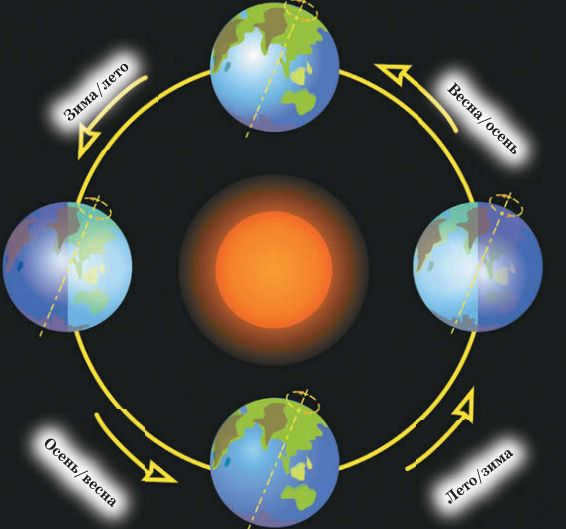
What is a leap year?
A leap year is a year that lasts 366 days. It occurs once every four years. In the 21st century, the leap years were 2004, 2008, and 2012. Due to the fact that the calendar year falls behind the astronomical year by 6 hours, in four years this difference accumulates to 24 hours, which is equivalent to a whole day! In order to synchronize the astronomical and terrestrial calendars, the concept of a leap year was introduced, which adds an extra day to the calendar.
On Venus, one year is shorter than a day.
© 2013-2022 Beginning to Explore the Universe
Oh, it may appear to be a simple question for children “what is a day?”, but surprisingly, not all adults know the answer to it. And it’s all because of its seemingly obvious nature. When I was a child, I once asked my grandmother what a day meant. She laughed and called me a “no-brainer.” However, I persisted and demanded that she explain it to me. She struggled to find the right words and eventually gave up describing such a simple concept. If you don’t want to be caught off guard by children’s questions, let me clarify what it really is.

An accurate description
A day is a period of time that consists of twenty-four hours. That is the case when we refer to the average solar day, which is the time it takes for a celestial body to complete one rotation around its axis. However, the sideric day is slightly shorter, lasting 23 hours, 56 minutes, and 4 seconds. The reason for this difference is that sideric days fall short of 24 hours, resulting in a surplus of time that accumulates over a span of 4 years and ultimately adds an extra day to the calendar – February 29th. February 29th.

It’s a complex inquiry concerning the duration of a day

As you can observe, while a day is a well-known unit of time measurement, it is accompanied by certain complexities, such as the instance I mentioned regarding the commencement of a day.
After delving further into this matter, I have come to realize that I should begin elucidating the concept of a day to my child using easily comprehensible facts. To illustrate, I can explain that a day consists of twenty-four hours:

A single day – consists of 24 Earth hours, which represents the time it takes for our planet to complete one full rotation around its axis. In simpler terms, it is the duration it takes for a specific point on the Earth’s surface to complete a full circle and return to its original position.
Interestingly, there is actually a slightly longer duration than 24 hours – precisely 23 hours, 56 minutes, and 4 seconds. This particular duration is referred to as a sideric day, while the one we are accustomed to, known as a solar day, aligns with the standard 24-hour period.

Geography, in my opinion, is the field of study that is most closely intertwined with our daily lives. It organizes a wealth of knowledge about the world around us and unveils the mysteries of nature.
If you find yourself standing at a specific point on the Earth’s surface and facing the Sun, it’s important to note that our planet will return to the same position in 24 hours, completing a full circle. This is the duration of an average solar day.

The primary question about the twenty-four hours
A twenty-four-hour period is approximately the duration of time it takes for our planet to complete one full rotation on its axis. There are two distinct types of days: sidereal and solar.
A sidereal day is defined as the time between two instances when a star crosses a specific meridian on Earth. These days last for 23 hours, 56 minutes, and 4 seconds. Sidereal days are primarily used in astronomical research.

A well-known situation
The concept of “day” is closely associated with solar days. Solar days are the time interval between two instances when the center of the Sun aligns with the Earth’s meridian. This duration is equivalent to 24 hours.
Based on this definition of a day, the concept of an hour was established, representing 1/24th of the average solar day.
From this understanding, various forms of time emerged:
Local time refers to the time at a specific longitude, although it is rarely used. To enhance convenience, the concept of time zones was introduced, dividing the Earth into 24 regions, each corresponding to an hour. But that is a different story altogether.
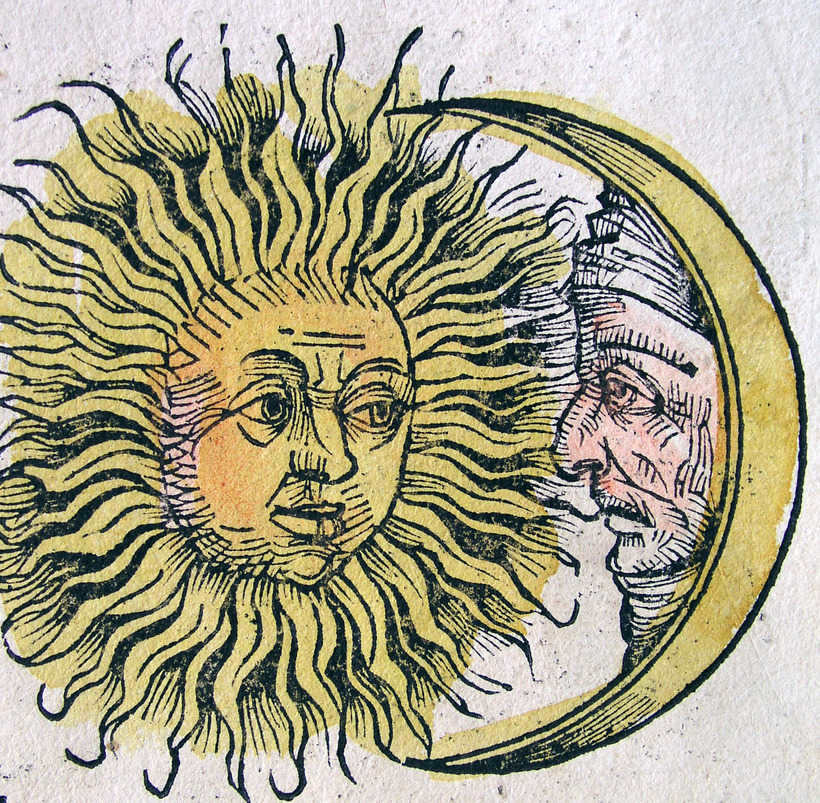
What are called star clocks?
When does a new day begin in the official time system? The concept is that there is a line of date change through the middle of the 12-hour zone, approximately along the 180° meridian. This line is arbitrary, with the same hours and minutes on both sides, but different dates. When crossing this line from east to west, one day needs to be added, and from west to east, one day needs to be subtracted. This phenomenon can be observed when traveling by airplane.
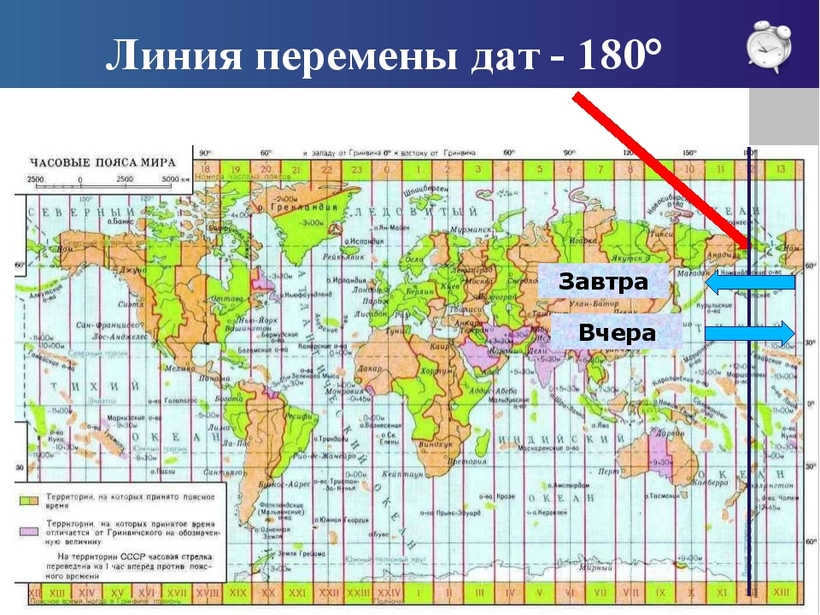
Hopefully, I have been able to provide a helpful response to this inquiry.
I am completely certain that each and every one of you who is perusing this piece of writing has, at some point in your lives, experienced the swiftness with which time passes. It occurs in such a way that you awaken, complete the most basic household tasks – head to the store, do some cleaning, prepare meals for the day, and wash clothes for the upcoming week – only to find that darkness has already fallen outside. Now, I would like to share my reflections on what constitutes a day and assist you in comprehending whether it is considered lengthy or brief.


How long is a day?
When we ponder the question of how long a day actually is, it’s not difficult to come up with a definition. A day is a period of time that consists of 24 hours, 1,440 minutes, or 86,400 seconds. More specifically, it represents the time it takes for the Earth to complete one full rotation on its axis. It’s worth mentioning that informally, a day can be divided into four parts: night, morning, lunch, and evening. Additionally, a day is a component of a larger unit of time known as a month, which can range from 28 days (in February during a non-leap year) to 31 days.
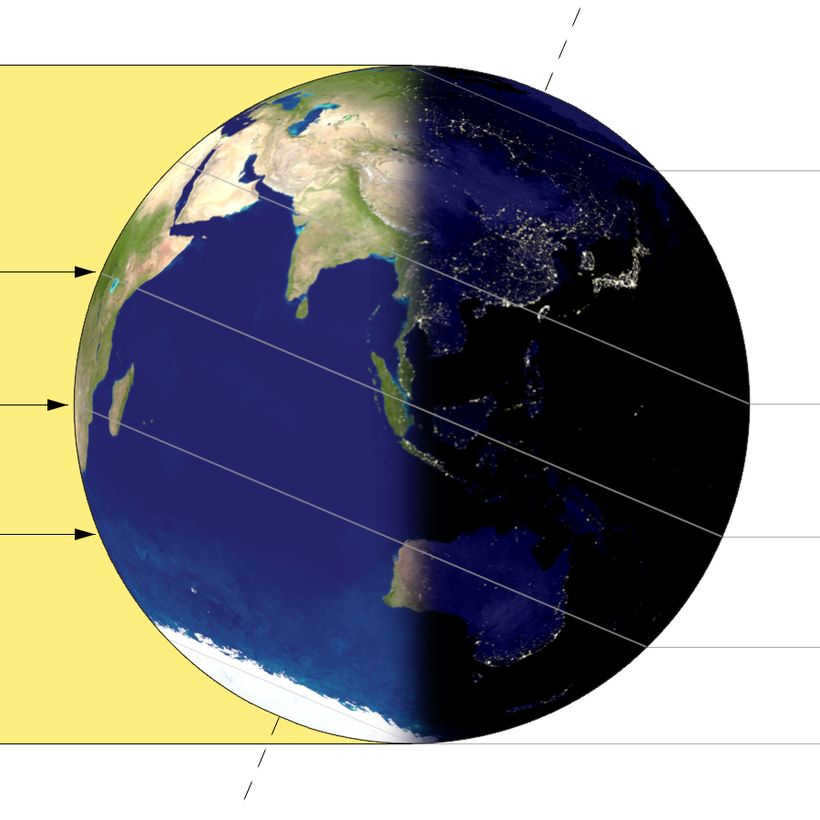
I believe I have already provided you with an understanding of the concept of a day. Now, I invite you to share your thoughts on the matter, whether you consider a day to be abundant or scarce. Personally, I believe it varies depending on the individual and how effectively they manage their time. Here is a compilation of less significant activities that can be relinquished in order to save time.

- Social networking sites. In today’s society, they have become a black hole where most individuals invest a significant amount of their daily schedule.
- Ineffective socializing. We all have acquaintances who reach out to chat when they are bored, resulting in conversations that often last at least thirty minutes without any meaningful content.
- Online gaming. Primarily affects younger individuals, although there are also adults who dedicate hours of their leisure time to this activity.
- Television series. It is unnecessary to explain that, in the vast majority of cases, they offer no significant benefits.

